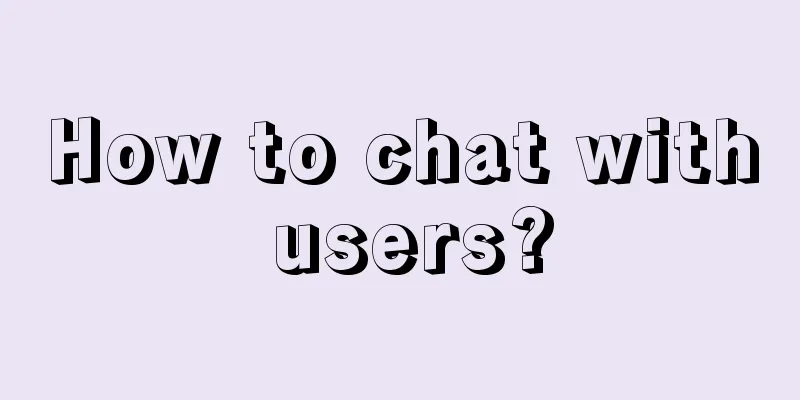Live slicing doesn’t work anymore?

If you often watch short videos, you must be familiar with such scenes: selecting a large number of wonderful moments from the replays of live broadcasts of top internet celebrities such as "Brother Yang", and then editing them into selected content, and posting the clips on your own short video account. You may think that such UP hosts are just loyal fans of top internet celebrities, but in fact, this is a money-making business called "live streaming slicing". The so-called "live streaming slicing" refers to short video UP hosts obtaining IP authorization from top internet celebrities, screening and editing selected clips of live streaming content, uploading them to their own accounts, and diverting traffic. The entire operation process is similar to the "secondary creation" of film and television dramas. If you pay close attention, you will find that the user accounts that edit and publish selected content are not just loyal fans of top influencers. While publishing clips, UP hosts will also hang the same product links as those in the top live broadcast rooms on the "small yellow car" (window) just to earn commission income. However, recently, many "live slicing" UP hosts have reported that this seemingly simple creative project, which uses the "big ship" of top IP to go to sea, has become increasingly difficult to make money. The "slice" content that I spent a lot of time and energy editing has a pitiful number of views, not to mention the sales of the product. So, what is going on? 1. Can small UP hosts get a share of the top traffic?“Live streaming slicing is a win-win-win project for top streamers, small UP hosts, and the supply chain.” Xin Hui, the head of an MCN in Guangzhou, revealed that the first person to initiate the "live streaming slice" licensing cooperation model was a top streamer in the industry with over 100 million fans, and the gameplay at that time was also very innovative:
This is exactly what the companies that cooperate with top-tier anchors and the supply chains behind them would like to see. "When small UP hosts release slices, they will attach the same product link as the anchor's live broadcast room based on the short video content. When ordinary users purchase products through the link, the top anchor will naturally get commissions, earning both traffic and money. For example, a fitness anchor and a popular science anchor also became popular again by relying on a large number of live slice content." It can be seen that authorizing content to small UP hosts for secondary creation and short video distribution can indeed attract traffic to the live broadcast rooms of top streamers and achieve uninterrupted income. But for small UP hosts, what are the benefits of editing the content of top streamers? Xinhui said that it is not as simple as "making wedding dresses for others" for small UP hosts to spend time editing and publishing the wonderful moments of top streamers. You know, in today's fierce competition in the pan-entertainment industry and the increasing head effect of the short video track, it is not easy for small UP hosts to stand out and become big Internet celebrities by their own efforts. "Many small UP hosts are aware of this fact. Instead of fighting against the industry's major trends and fate, it is better to make money." She said that as more and more top anchors followed suit and launched the "live streaming slice" authorization, many small UP hosts also saw the opportunity to make money. That is, through the authorization of "live streaming slices", the image and influence of top streamers are used to list corresponding product links in the short videos released to earn sales commissions. Since the released content is edited from the live streaming playback, naturally there will be viewers who will buy the linked products for the top streamers' big IP. Of course, when viewers buy products through links, the top streamers also need to share the commissions they earn with the small UP hosts. According to Xin Hui, the current split ratio of "live streaming slices" in the industry is either "30% to 70%" (70% for the streamer and 30% for the small UP host) or "50% to 50%". Previously, there were media reports that a top anchor earned up to 16 million yuan a month through "live streaming slices". Among them, 6 million yuan was distributed to downstream cooperative UP hosts. Another UP host revealed that as early as the early days of the project, that is, in the second half of last year, he could earn tens of thousands of yuan in commissions every month through "live streaming slices". It can be seen that the "live streaming slice" project initiated by some top streamers has become a way for many small UP hosts who know they have no hope of becoming famous to make a fortune and share a share of the top streamers' pie. However, as more and more small UP hosts start "live streaming slices", is this business still as profitable as before? 2. Why can’t “live streaming slicing” be done anymore?"Live streaming is very difficult now, and the trend is only about half a year away." Lok is a part-time food short video UP host. Due to the low traffic of her original content, she felt hopeless of "making her debut". So at the end of last year, she switched to the field of "live streaming slices" and obtained the authorization of content and product links from a top anchor under an MCN. She said that as early as the birth of the "live streaming slice" model, due to the great influence of the top anchors and the small UP hosts entering the industry, it was indeed quite profitable. At that time , a slightly more active UP host could easily earn 3,000 to 4,000 yuan a month by posting a few live streaming clips of the top anchors, and a more diligent UP host could even earn six figures a month. "It is precisely because of this that many UP hosts have turned to live streaming slicing. As long as you know how to edit, you can do it, and the threshold is very low." Lok also revealed that many small and medium-sized MCNs have followed suit after seeing the "money power" of "live streaming slicing". "After obtaining the authorization of a big IP, they recruited a group of fresh graduates and edited a large number of playback short videos to sell goods." Indeed, by searching for the term “live streaming slices” on recruitment platforms, one can still find information about some MCNs previously recruiting editors. One agency located in a third-tier city even offered a high base salary of 2,000 to 3,000 yuan, and benefits such as sales commissions and performance rewards were also not low. However, the influx of a large number of small UP hosts and small and medium-sized MCN organizations into the "live streaming slice" field has made this originally low-key and lucrative project less profitable. Lok said that first of all, with the increase in the number of UP hosts entering the industry, the content of the "slice" has become highly homogenized. After all, there are only a few top streamers, and the authorized materials are very limited. A large number of small UP hosts edit and edit, and it is very likely that the content is similar. Over time, short video platforms will naturally not give more traffic to homogeneous content, and there is even the possibility of blocking accounts. "Before, a short video of a celebrity live broadcast would have tens of thousands of views. Now, even if I edit a dozen or twenty a day, the total number of views is less than 100, and many are only in the single digit. Without traffic, how can users click on product links? There is no way to share commissions." In addition, Lok also revealed that some top streamers, after using the "live streaming slice" authorization to activate a large number of UP hosts to distribute content for them, divert traffic, and earn a lot of commissions, began to "burn bridges after crossing the river" and tighten and withdraw relevant content authorization. Among them is a streamer who first launched this cooperation model and has hundreds of millions of fans. "Everyone edited the video and diverted traffic to the top streamers, but now they think the content of the small UPs is low and they want to stop." Lok still feels very angry when talking about the withdrawal of some streamers and the cancellation of the authorization of "live streaming slices". She admitted that some top streamers even started to report the small UPs they had worked with after revoking the authorization. After the IP authorization of a large number of small UP hosts was revoked, the traffic that followed the IP would naturally not be retained in the accounts created by the small UP hosts. It is obvious that the ultimate winner of this seemingly "win-win-win", low-key and lucrative project is only the top streamers. However, there are still some small UP hosts who don't seem to want to give up. 3. Slice "traffic diverter" transforms into selling shovelsIn fact, if you search for the term “live slicing” online now, you will see a large number of related training courses:
The short video "live slicing" model has only been around for more than half a year. Many UP hosts with experience in "live slicing" also said that except for those in the industry, most people are very unfamiliar with the term "live slicing". The reason why it has suddenly become a so-called entrepreneurial outlet is due to various training courses. "The period when live streaming slicing can really make money is probably only two or three months. Now there are more fish than fish in less water and it is not profitable." "Mosi", a small UP host who briefly engaged in "live streaming slicing" at the end of last year, said that now many of his colleagues have realized that the short videos they have painstakingly edited day and night have become a tool for top anchors to attract traffic and sell goods. Although the "live streaming slicing" has become a "red ocean" with fierce competition, many UP hosts who have not made enough money, especially MCN agencies, are unwilling to give up so easily and try to continue to dig for gold in the "red ocean". "Selling shovels" and conducting training have become the best way to make the last wave of money. "It is precisely because the live broadcast slicing project is unpopular and low-key that many people still don't know about its existence." Therefore, when some top anchors "exploited" small UP hosts and gradually took back the secondary creation authorization, "live broadcast slicing" was also packaged by small UP hosts and small and medium-sized MCN organizations as a so-called new entrepreneurial outlet. Mousse said that although there are "shovel sellers" in all walks of life, due to the extremely short popularity of "live slicing", the "shovel sellers" in the industry have not yet formed a systematic course. The so-called skills and strategies are also collected from all over the place, and they are in an attitude of "cutting leeks again" and then running away. "In the early days, there were indeed media reports that live streaming slicing could earn six figures a month, so the course is still very attractive." She revealed that many UP hosts and MCN agencies currently selling "live streaming slicing" courses dare to sell the so-called skills of a few pages of text for hundreds or even thousands of yuan. The content is nothing more than some editing knowledge and the process of obtaining authorization. The "shovel sellers" who are well aware of the current situation of "live streaming slicing" will naturally not tell students that the current project is no longer profitable. After the students have "graduated", they will suddenly realize that this short-lived opportunity has passed, but it is too late. "At this time, the unwilling students will sell courses again, intending to recover their losses and become the next 'shovel sellers'." According to relevant insiders, as more and more students are "graduating", the novice UP hosts who are unwilling to be at the bottom of the "leek chain" are desperately selling the so-called courses. Now on the second-hand e-commerce platform, a set of "live streaming slicing" materials and tutorials can be bought for only 9.9 yuan. ConclusionThe initiative of the so-called "live streaming slice" project was not in the hands of the small UP hosts from the beginning. It was destined that the new players would eventually become "tools" that were used and discarded. As for the newcomers who were "fooled" into the industry, perhaps they can only comfort themselves with the reason that "learning editing will give you another skill." Author: Kagura Source: WeChat public account "Dongdong Notes (ID: dongdong_note)" |
<<: Letter to the boss: Category domination is the ultimate goal of Xiaohongshu's operation
>>: Understanding Global Consumer Operations from Four Data from Kidswant’s Annual Report
Recommend
Which Google overseas promotion company is the best? What does Google overseas promotion mean?
Domestic merchants doing cross-border e-commerce b...
What is Wanlihui? Is Wanlihui safe?
In this context, cross-border payments are becomin...
What are the conditions for joining the Russian e-commerce platform Ozon? What are the suggestions for joining Ozon?
Compared with cross-border e-commerce platforms su...
What is the current status of Lazada? Overview of Lazada's current status
Lazada is one of the largest e-commerce platforms ...
Where is the entrance to Amazon's overseas sites? How many Amazon overseas sites can I register?
Amazon is a global e-commerce giant, and its overs...
How to do Shopee without source of goods?
Shopee is a Southeast Asian e-commerce platform. M...
How is Amazon's star rating calculated? How can I improve it?
On the shopping platform of e-commerce giant Amazo...
How much does a cross-border e-commerce erp system cost? What are the commonly used erp systems?
If you want to open a store in the cross-border e-...
A group of male celebrities became popular by selling goods on video accounts. Is the secret to their traffic "playing the role of Jin Dong"?
On the emerging stage of video account e-commerce,...
WeChat Store, releases hidden tricks
WeChat Stores recently launched a new feature - hi...
What are some ways to avoid infringement when selecting products on Amazon?
Amazon has strict management on product infringeme...
When is Amazon's Black Friday Cyber Monday? What can you do to prepare?
Amazon is a relatively well-developed cross-border...
Oriental Selection went to work for JD.com, but can this solve its growth anxiety?
Delivery within hours is a territory that almost e...
Tea and coffee shops are eyeing young people’s breakfast
Milk tea and coffee are the "life-saving reme...
How to join the cross-border e-commerce shein? What are the requirements for joining?
As a well-known cross-border e-commerce platform, ...

![The public account [Content Boost] is in internal testing, and the traffic is coming!](/upload/images/67e6ef0eca773.webp)







